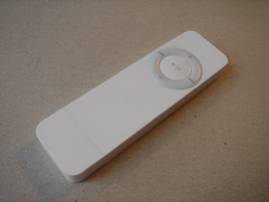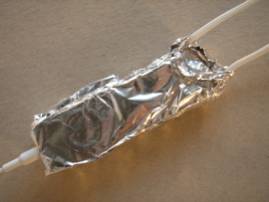quiet computing, heatsinks, fans, gadgets, software utilities, java programming, computer hardware, mozilla, deals, TV Tuners cards / PVR, things that are silver or shiny
Friday, February 11, 2005
Browser speed comparisons
Victor Laszlo Moholy
iPod Shuffle RAID
 "So, what do you do when you and some friends are all getting iPod Shuffles? You make a RAID array out of them, of course! Follow along as we explore new depths of geekery.."
"So, what do you do when you and some friends are all getting iPod Shuffles? You make a RAID array out of them, of course! Follow along as we explore new depths of geekery.."
Learn to Use the New Annotation Feature of Java 5.0
Previous versions of Java provided a limited and ad-hoc mechanism for annotating code through JavaDoc comments and keyword modifiers. Tools such as XDoclet provide a slightly more sophisticated, yet non-standard annotation syntax, which piggybacks on top of JavaDoc. But now, with Java 1.5, annotations are a typed part of the Java language and allow for both runtime and compile-time processing of annotation data.
What Are Annotations?
In short, annotations are metadata or data about data.
Annotations are said to annotate a Java element. An annotation
indicates that the declared element should be processed in some special
way by a compiler, development tool, deployment tool, or during
runtime.
Older versions of Java have rough-and-ready annotation functionality. A good example is the @deprecated JavaDoc tag. The @deprecated tag is used for more than sheer documentation purposes. This tag has no effect on the code it describes, but causes the compiler to produce warnings if any other code references the tagged element. JavaDoc does not seem to be the proper place for this type of metadata, but there was no other annotation facility in previous versions of Java. With Java 1.5, finally, annotations are a typed part of the language and the version even comes with some with pre-built annotations, one of which can be used to mark a class as deprecated (I'll cover this later)."
How does a 600GB Toshiba DVR, the RD-Z1 sound to you? - Engadget - www.engadget.com
"What, a few hundred gigs of DVR space wasn’t enough? Oh yeah, you’re DVRing hi-def, sorry, peep Toshiba’s monster 600GB RD-Z1, a straight HDMI DVR with dual satellite tuners, integrated Ethernet, and an 8x DVD-R/5x DVD-RAM burner. Good god, the Japanese don’t mess around—too bad it’s about as likely to hit these shores as TiVo would be to release something that could even begin to compete."
Gizmodo : Johnson & Johnson Dermabond
 "Is purple your favorite color? Do you often lose to yourself in drunken games of mumblypeg? Good news for you, then. DERMABOND (From the latin for 'skin' and 'sticky') by a Johnson & Johnson subsidiary is a liquid stitching system— simply pinch the wound to bring the skin together, apply two layers of Dermabond, and hold for about a minute. It forms a durable, flexible bond that stays around for about a week. In pleasant violet, because your bar buddies deserve no less. Similar technology has been in use for quite a while, but Johnson & Johnson is pushing it to consumers, whose love for self-inflicted wounds have been increasing since the discovery of LiveJournal."
"Is purple your favorite color? Do you often lose to yourself in drunken games of mumblypeg? Good news for you, then. DERMABOND (From the latin for 'skin' and 'sticky') by a Johnson & Johnson subsidiary is a liquid stitching system— simply pinch the wound to bring the skin together, apply two layers of Dermabond, and hold for about a minute. It forms a durable, flexible bond that stays around for about a week. In pleasant violet, because your bar buddies deserve no less. Similar technology has been in use for quite a while, but Johnson & Johnson is pushing it to consumers, whose love for self-inflicted wounds have been increasing since the discovery of LiveJournal."
Thursday, February 10, 2005
iPod silvershuffle - do it yourself silver iPod Shuffle
iPod silvershuffle: "the perfect do it yourself accessoire"
Step 1: Aquire an iPod Shuffle

Step 2: Get some aluminum foil, or you can really pimp it if you use the new Reynolds Wrap® Release® Non-Stick Aluminum Foil


